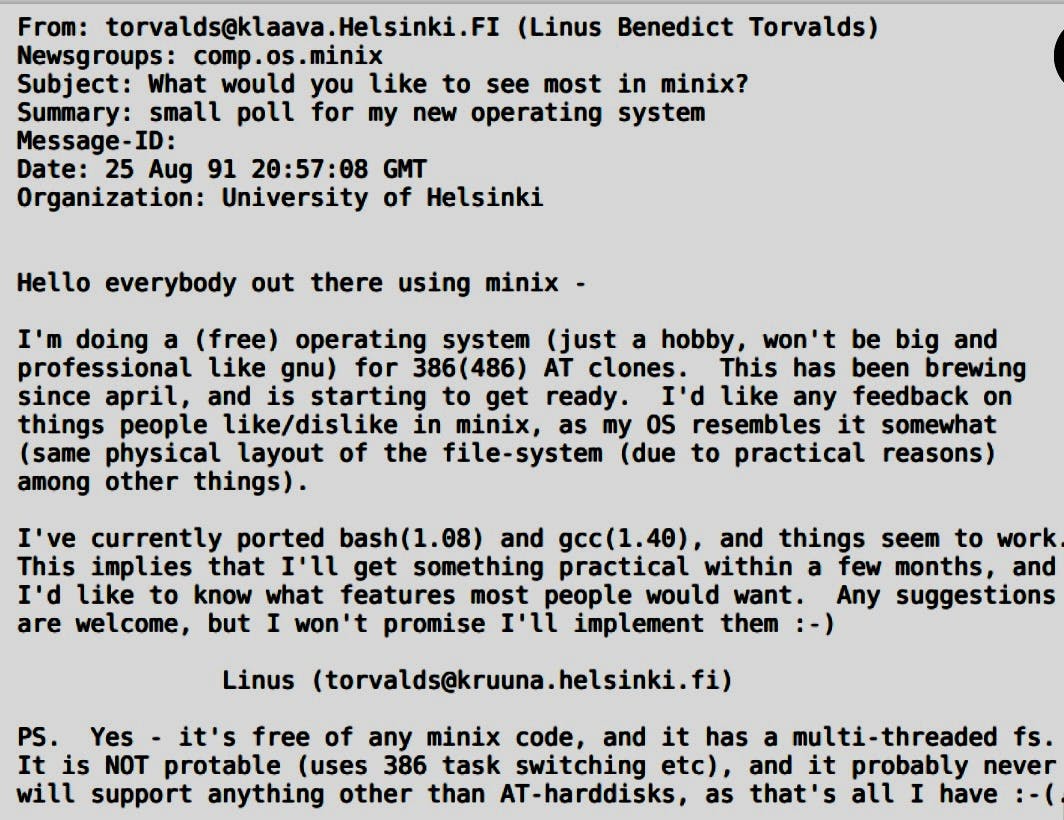Ever wondered how Linux came into existence? It's a long and fascinating journey, and a big part of it starts with a system called UNIX. This blog post shows how UNIX systems laid the foundation for the powerful Linux systems we use today.
Unix system
In the late 1960s, a team at Bell Labs, led by the brilliant Ken Thompson and Dennis Ritchie, created Unix on their own time. Frustrated by the limitations of existing systems, they aimed for something different:
Simple and Modular: Unix was built with understandable code, organized into clear sections (modules) for easy modification and adaptation. It wasn't flashy, but it was powerful and flexible.
Portable and Efficient: Written in the C language, Unix could run on various machines without major changes. This portability made it a game-changer in the early days of computing.
Text-Based Interface: Unlike the graphical interfaces we're used to today, Unix interacted through commands typed in text. While demanding initial learning, it offered precise control and efficiency for experienced users.
Open vs. Closed Source: Initially, Unix remained under proprietary control, leading to various commercial versions:
BSD(Berkeley Software Distribution): Developed at UC Berkeley, BSD embraced open-source principles, inviting anyone to contribute and modify the code. This fostered a vibrant community and led to groundbreaking innovations
System V: Backed by AT&T, System V offered greater stability and features but lacked the open-source spirit. It was primarily used in large businesses and government agencies.
These different paths laid the groundwork for the exciting story of Linux.
The Dream of Free Software: The GNU project
In 1984, Richard Stallman, a brilliant programmer, embarked on a mission to create a completely free operating system, named GNU. Driven by a desire for software freedom and ethical use, Stallman envisioned a system where users could freely access, modify, and share the code. The GNU project gathered momentum, producing essential software components like the Emacs text editor and the GCC compiler. However, one crucial piece remained missing - the kernel.
Enter Linus Torvalds: A Student's Hobby Sparks a Revolution
In 1991, a Finnish student named Linus Torvalds, inspired by Minix, a small UNIX-like system, decided to create his own kernel. Initially developed for his personal computer, the kernel quickly attracted other programmers who saw its potential. This marked the birth of the Linux kernel, named after its creator.
Linus Torvalds first online post regarding the creation of Linux back on 25th August, 1991

Collaboration and the GPL:
The Linux kernel thrived on collaboration. Programmers from all over the world contributed code, fixed bugs, and implemented new features. This community-driven approach fueled rapid development. Importantly, the kernel was released under the GNU General Public License (GPL), ensuring its continued free availability and modification.
Linux Distributions:
While the kernel was the core, using it directly required technical expertise. Enter Linux distributions, collections of software packages built around the kernel, offering a user-friendly experience. Popular distributions like Debian, Red Hat, and Ubuntu emerged, catering to diverse needs and preferences.
From Desktops to Servers and Beyond:
Initially used by hobbyists and tech enthusiasts, Linux's versatility and stability started attracting attention. It found its way into servers, embedded systems, and even supercomputers, powering critical infrastructure and scientific research. Today, Linux runs on billions of devices, making it the world's most popular open-source operating system.
A Legacy of Innovation and Openness:
From Stallman's initial vision to Torvalds's kernel and community contributions, Linux is a testament to collaboration, open source principles and the potential of free software to revolutionize technology.
So, the next time you use your smartphone or browse the web, remember the remarkable journey of Linux, from a personal project to a global phenomenon. It's a story that continues to inspire and empower tech enthusiasts and developers worldwide.
Checkout my upcoming blog to understand the Crucial Role of The GNU project in the Birth of Linux.
I'd highly recommend the book, "The Linux Programming Interface" if you want to learn more about Linux in detail. It gave me an informative foundation for this blog post. Thanks for reading!
